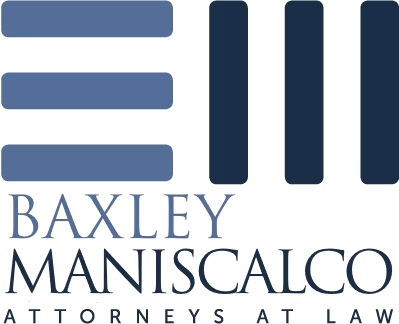
A recent Alabama Supreme Court decision in Collins v. West Alabama Bank & Trust has ignited a judicial debate about whether a 97-year-old legal precedent still makes sense in today’s mortgage market.
While the court ultimately ruled in favor of the bank in this foreclosure case, multiple justices expressed concerns that Alabama’s approach to determining when a foreclosure sale price is unconscionably low may be stuck in the past.
The Case That Started the Debate
West Alabama Bank & Trust initiated ejectment actions against the Collins family after purchasing their properties at a foreclosure sale.
When the case reached the summary judgment stage, the Collinses raised a defense that would resonate with many homeowners facing foreclosure: they argued the sale price was unconscionably low compared to the properties’ actual value.
The court’s unsigned opinion turned to a 1927 case, Hayden v. Smith, for guidance. According to the main opinion, Hayden established a specific framework for determining when a foreclosure sale price is so inadequate that courts should intervene:
The Hayden framework creates two distinct pathways for challenging a foreclosure based on price:
- If the sale price is one-tenth (10%) or less of fair market value, the sale can be set aside.
- If the price falls between one-tenth and one-third (10-33%) of fair market value, the sale can be set aside only with additional evidence of unfairness or fraud.
The court affirmed judgment for West Alabama Bank because the Collinses hadn’t provided sufficient evidence at the summary judgment stage to satisfy either prong of this nearly century-old test.

Justices Question Outdated Precedent
What makes this case particularly noteworthy isn’t the outcome but the chorus of judicial voices questioning whether Alabama should still be using Depression-era standards for modern foreclosures.
Justice Cook, in a special concurrence, explicitly acknowledged that Hayden’s framework “might be outdated” and took the unusual step of inviting future litigants to ask the Court to reexamine how this 1927 precedent should apply to contemporary mortgages.
Justice Cook went further, calling upon the Alabama Legislature to consider creating improvements to the state’s foreclosure system.
This direct appeal to lawmakers suggests frustration with being bound by precedent that predates modern banking regulations, Truth in Lending laws, and the entire structure of today’s mortgage industry.
The judicial disagreement extended beyond whether Hayden remains relevant.
Justice Sellers, joined by Justice Lewis, reiterated his position that there’s nothing inherently wrong when a mortgagee uses its power of sale to satisfy debts owed to it, suggesting a more bank-friendly interpretation of foreclosure law.
The 40% Question
Perhaps the most significant challenge to existing precedent came from Justice Bryan, joined by Justice Wise, who argued that more recent cases have evolved beyond Hayden’s rigid percentages.
They concluded that a sale price of 40% of fair market value could create a triable issue on whether the price was inadequate—a position that would dramatically expand protections for homeowners compared to Hayden’s one-third threshold.
This disagreement among the justices reveals a fundamental tension in Alabama foreclosure law. The competing viewpoints reflect different philosophies:
- Maintaining strict, predictable standards even if they seem harsh by modern standards.
- Evolving legal protections to match contemporary economic realities.
- Balancing lender rights with borrower protections in an era of complex financial instruments.
The fact that four different judicial opinions emerged from a single foreclosure case demonstrates how unsettled this area of law has become.

Implications for Alabama Homeowners
While the Collins family lost their specific case, the broader implications of this decision could benefit future homeowners facing foreclosure.
Justice Cook’s invitation for litigants to challenge Hayden’s continuing validity essentially opens the door for a potential overhaul of Alabama’s approach to unconscionable foreclosure prices.
For homeowners currently facing foreclosure or those who have recently lost properties at foreclosure sales, this case suggests several important considerations:
- Courts remain bound by the Hayden framework until formally overruled.
- Evidence of sale price compared to fair market value remains crucial.
- Multiple justices appear receptive to reconsidering these standards.
- Legislative action might provide relief faster than judicial evolution.
The disagreement about whether 40% of fair market value could be unconscionably low—compared to Hayden’s 33% ceiling—illustrates how even small percentage differences can have enormous financial consequences for families losing their homes.
Looking Ahead: Reform on the Horizon?
Justice Cook’s call for legislative action suggests that judicial reform alone may not be sufficient to modernize Alabama’s foreclosure protections.
The Legislature could act more comprehensively than courts bound by precedent, potentially creating new safeguards that reflect current economic conditions and modern lending practices.
Potential areas for reform based on the justices’ concerns might include:
- Updating percentage thresholds for unconscionable sale prices.
- Creating clearer standards for proving unfairness in foreclosure proceedings.
- Implementing additional notice requirements for foreclosure sales.
- Establishing minimum bid requirements based on assessed values.
Until such reforms occur, Alabama homeowners facing foreclosure must navigate a legal landscape still governed by precedents from an era when a mortgage was a simple transaction between a local bank and a borrower, not the complex financial instrument it has become today.
Protecting Your Property Rights
When facing foreclosure or dealing with the aftermath of a foreclosure sale, understanding your rights under current law—while remaining aware of potential changes—becomes essential.
The complexities highlighted in the Collins case demonstrate why professional legal guidance is crucial in these situations.
Whether you’re facing foreclosure, questioning a completed foreclosure sale, or need guidance on estate planning to protect your property for future generations, contact Baxley Maniscalco at (256) 770-7232 to discuss how we can help safeguard your interests.
Can't find what you're looking for? Search our site below.










